PROTECT YOUR DNA WITH QUANTUM TECHNOLOGY
Orgo-Life the new way to the future Advertising by AdpathwayIt’s a wonder what a few easy landscaping tweaks can do for the look of a yard. Without a major overhaul or renovation, simple ways to spruce up and refresh the composition bring dynamic visual interest and quick curb appeal. They also create inviting spaces for spending time outdoors and even improve the view from inside the home.
To make changes and upgrades, assess the current site and any landscape challenges to determine what would bring the most benefit. Some easy landscaping tweaks are suitable as we head into fall, while others can wait until spring with a bit of planning over the winter.
Our easy fixes are manageable design and maintenance tasks that will improve the overall look of the yard. Tackle them one at a time, or incorporate a few for a unified landscape with seemingly effortless appeal.
Tidy Borders
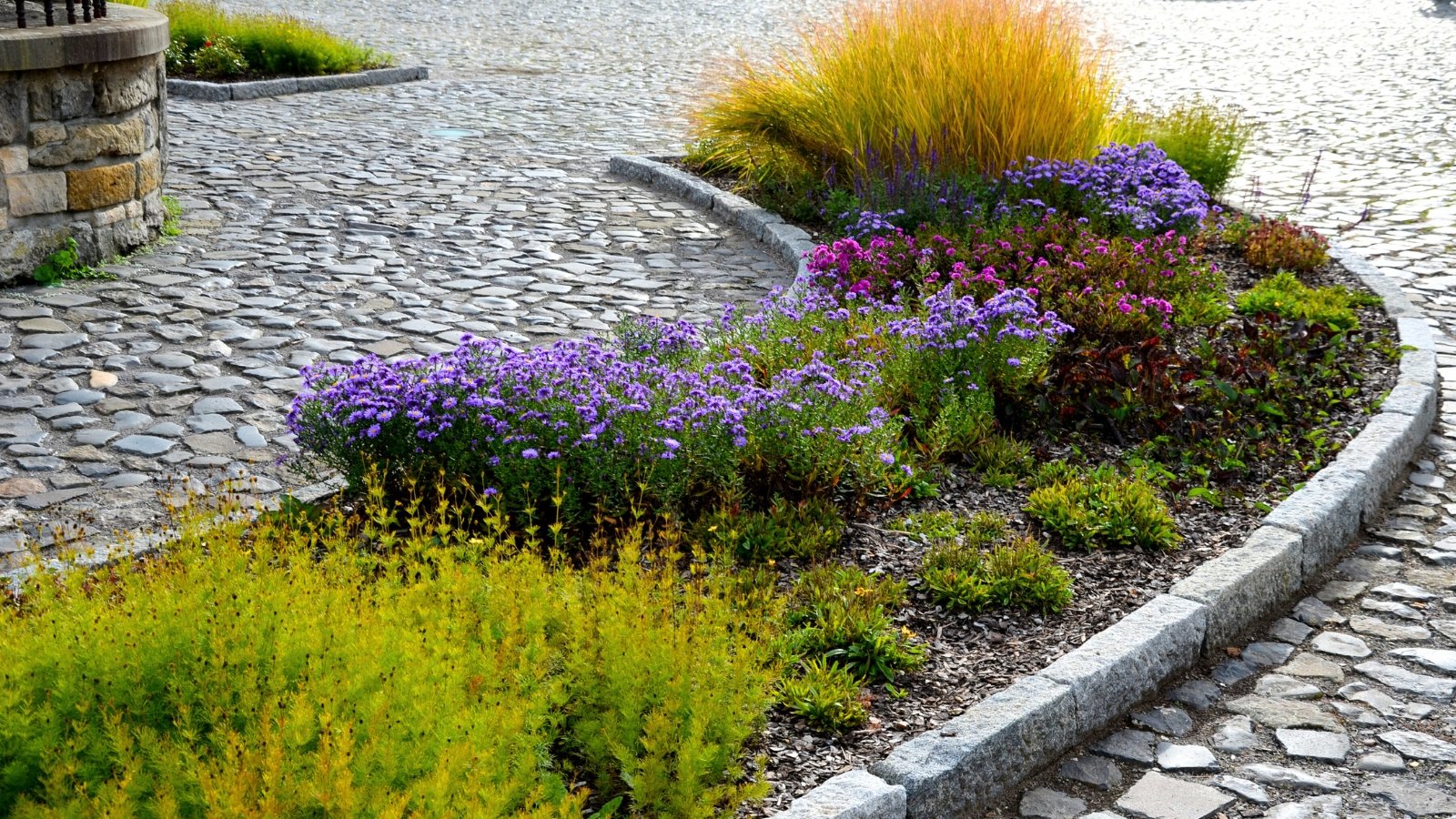 Well-tended beds give the whole yard a polished look.
Well-tended beds give the whole yard a polished look.Cleaning up beds and defining their edges is one of the top things we can do to enhance the yard’s aesthetics. It’s also low-cost, relying mainly on our labor.
For this easy landscaping tweak, trim away brown, crispy plant parts and remove any dead ones. The end of summer is a good time to refresh borders by tending hardworking perennials and annuals. Light trimming and deadheading now promote a final flush of blooms for those with an extended flowering season.
Weeding brings instant gratification toward transforming the landscape. It also reduces future populations if we catch them before they go to seed, so it’s not an exercise in futility. Keeping the beds weed-free reduces overwintering sites for pests and pathogens, and limits competition for resources like moisture, nutrients, and root space.
After tidying the plants and plucking the weeds, remove debris from the beds. A light rake to capture dropped petals, leaves, and twigs goes a long way for a clean look and also to reduce harboring diseases at the ground level.
Lastly, redefine the bed edge and topdress with mulch. Spade around the edge of the border to create separation with a clean edge. Add a mulch material (bark, pinestraw, compost, leaf mulch) for fresh definition. Mulch not only gives a neutral backdrop, but it also regulates soil temperatures for roots, retains moisture, suppresses weeds, and adds nutrition as it decomposes.
Add a Specimen Tree
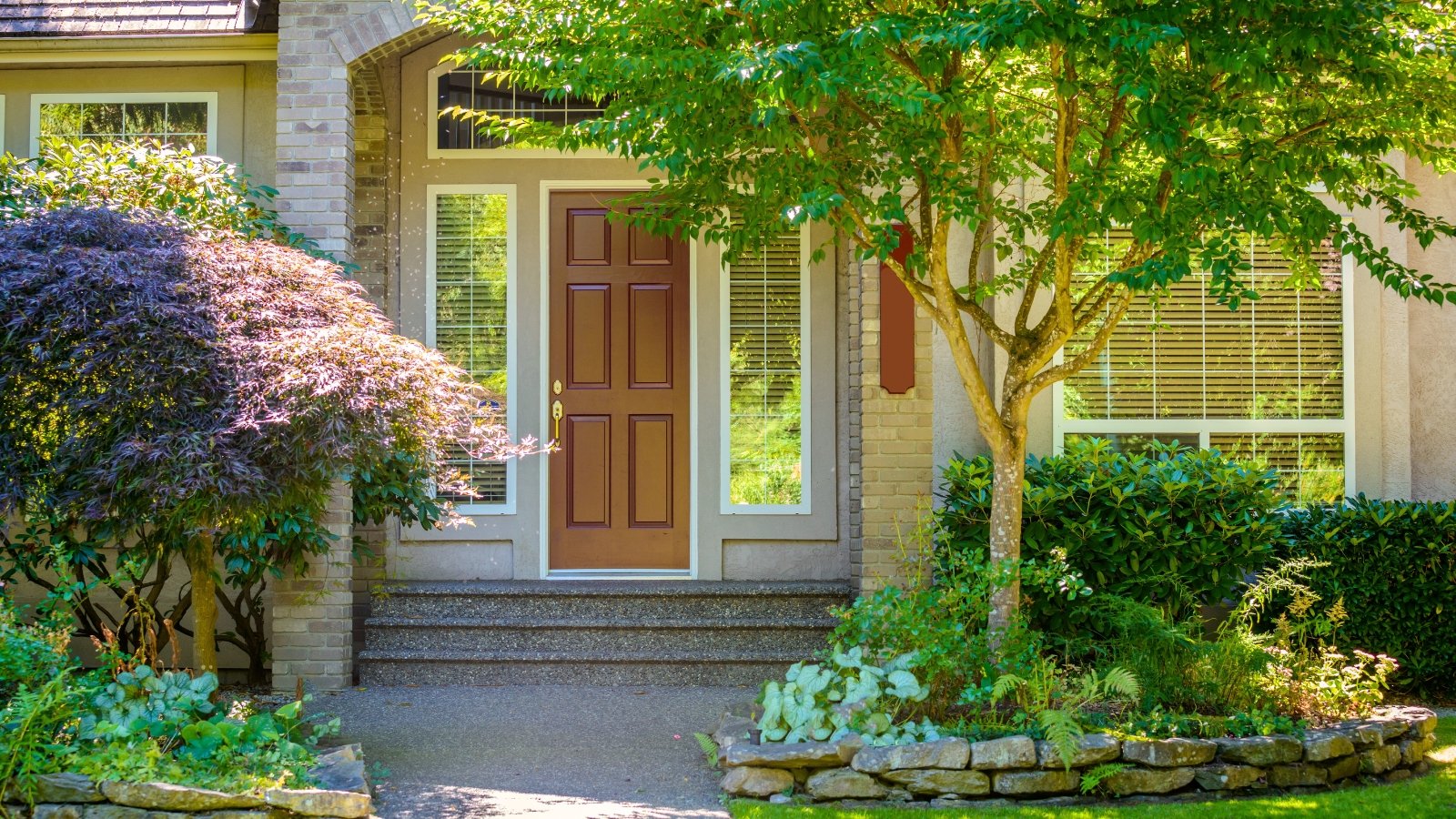 Small specimen trees fit perfectly near the house.
Small specimen trees fit perfectly near the house.If you have the space and don’t have many trees already, consider a specimen tree for an easy landscaping tweak. Trees add dimension to the landscape, bringing a layer of vertical interest.
Those with ornamental value, like blooms, fruits, and interesting bark or branching, bring multi-season appeal. They also support pollinators, birds, and other wildlife, while providing cooling shade. Specimen trees have the added benefit of boosting property value.
Trees grow across garden sizes, from small spaces (even pots and containers) to vast landscapes. Small to mid-sized, multi-trunk specimens make beautiful additions closer to the house (think redbud, Japanese maple, sweet bay magnolia, and serviceberry) to add height and variation. Large trees become focal points where more space allows. Evergreens anchor the landscape all year, while deciduous trees bring unique seasonal interest.
Create an Easy Focal Point
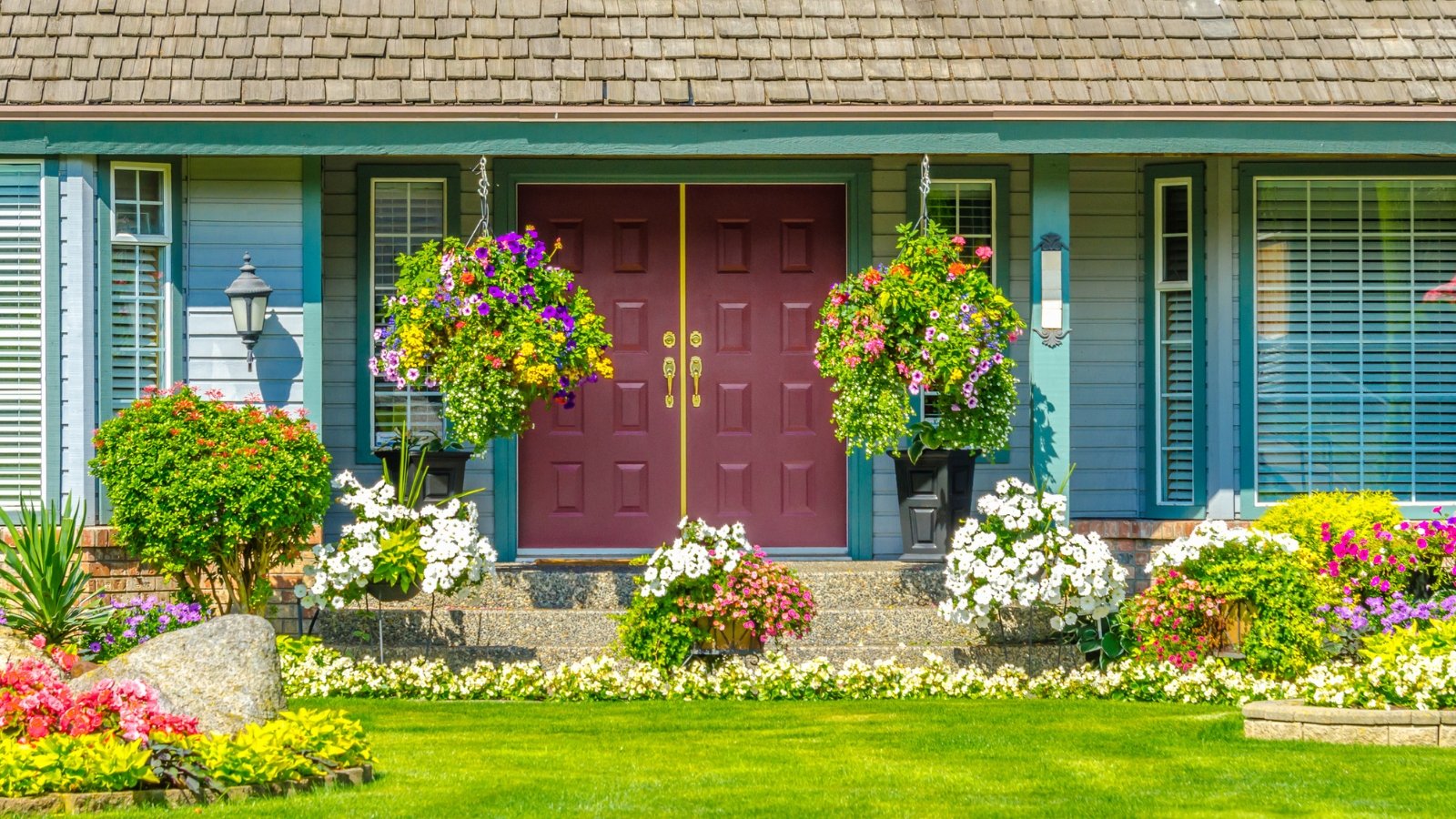 Simple arrangements lead the eye without overwhelming surroundings.
Simple arrangements lead the eye without overwhelming surroundings.A focal point draws attention in a specific direction. They become a strategic spot for the eye to rest and punctuate a space. From a fountain or sculpture to a specimen plant, cluster of containers, well-situated bed of blooms, or a striking view, focal points are eye-catching accents of definition.
Concentrated focal points have the power to highlight features and also to distract from less-than-ideal landscape happenings. Hanging baskets or containers flanking the entryway are prime examples of this easy landscaping tweak. They’re the first thing to grab attention as a visitor approaches the home, and guide us with a welcome. The detail lets us overlook what may be next on the list of improvements.
Choose focal points that make sense, like framing the entry, a specimen tree, or a view from inside looking out. A lot of strong objects or exclamation points in the landscape can become muddled.
Use Organic, Curved Lines
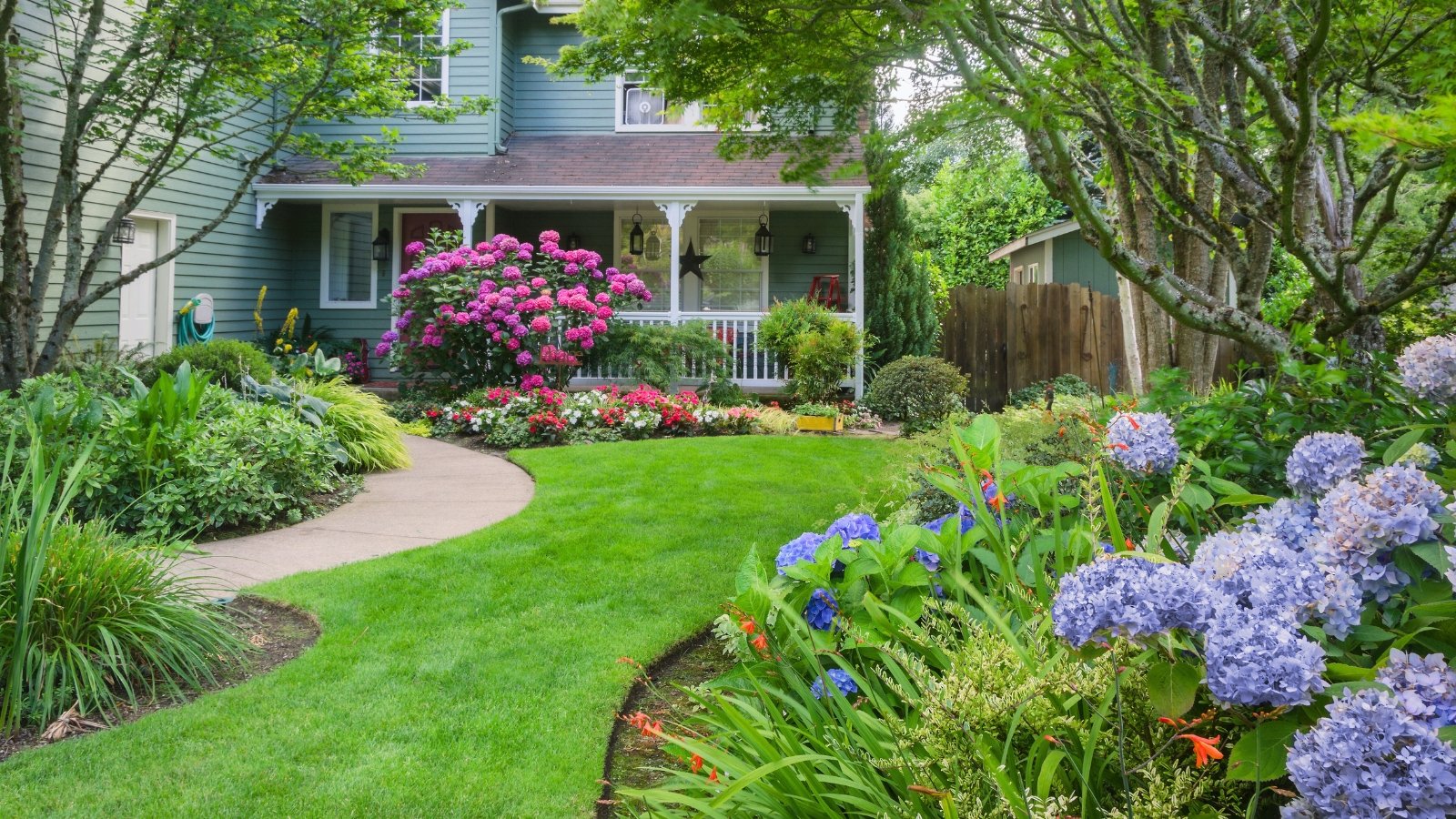 Linear features connect zones while enhancing the overall layout.
Linear features connect zones while enhancing the overall layout.Lines play an important role in structuring the overall layout of a landscape, as well as how we move through it, physically and visually. As a design element, lines include paths, bed edges, walls, patios, pool margins, and so on. Any feature with a linear aspect that creates a distinction between materials makes a mark on the look.
Paths, walkways, and beds make it easy to create powerful lines. A sweeping curve lets us meander organically with an element of mystery as to what’s around the curve. A bold straight line moves us directly from one zone to another, creating a dynamic approach.
Straight lines tend to be more formal, structural, and stable. A curved bed increases the heft of a foundation planting or naturalizes a perennial border.
Whether straight or curved, use strong lines rather than small movements in short zigzags or little waves.
Plant en Masse
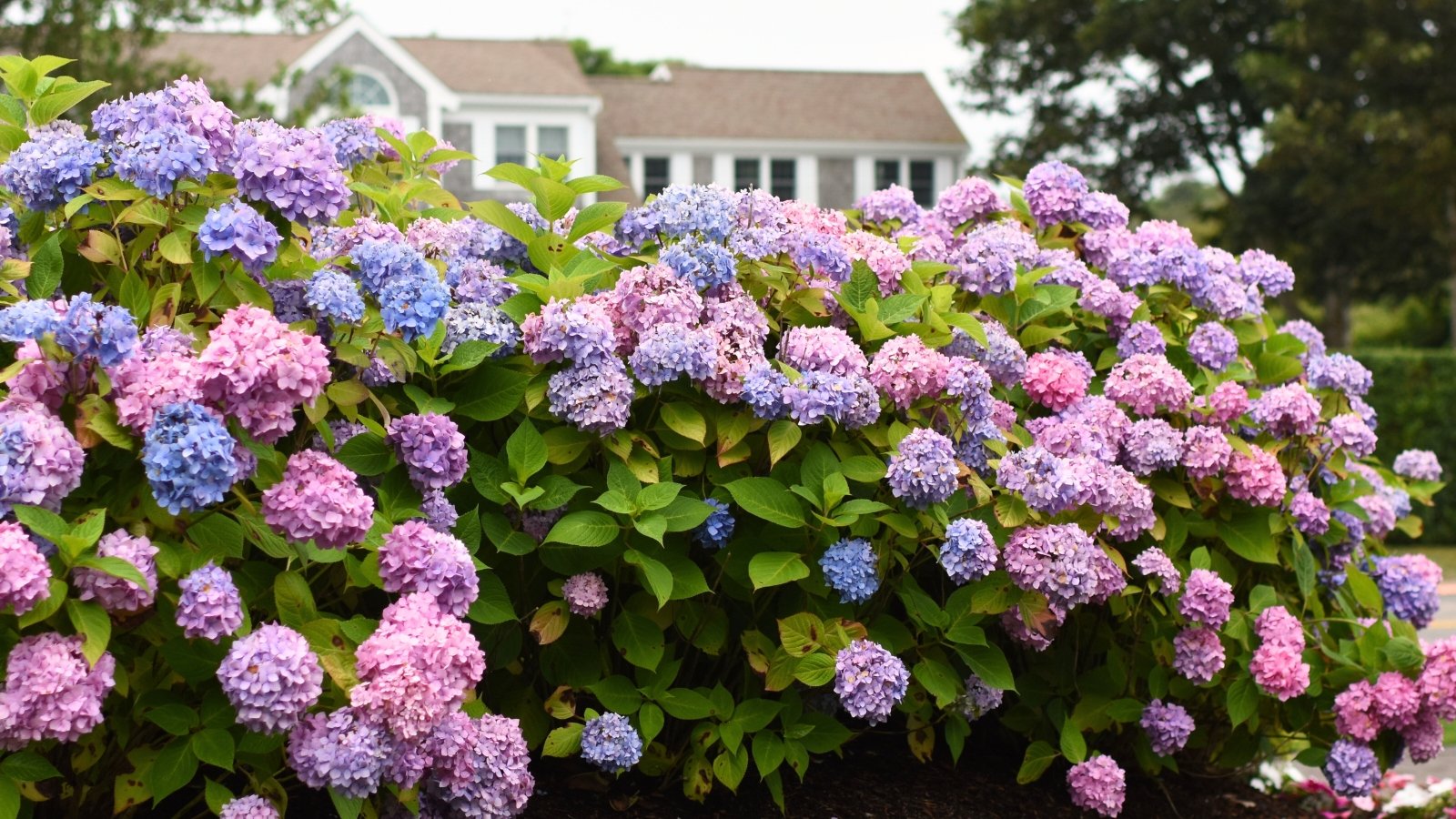 Planting in groups makes small areas feel much larger.
Planting in groups makes small areas feel much larger.Planting en masse, or in a group, is an easy landscaping tweak that creates a big impact. Combining drifts of single-plant varieties brings visual interest through color, form, and texture.
Mass planting is one of the easiest ways to create unity in the landscape through repetition, organizing the overall experience, and lending a sense of balance. It’s a streamlined way to fill a designated space while mirroring natural plant communities (a variety of plant types, repeated).
Whether working with a large or small garden, planting in numbers brings impact and harmony to a space. The plants make more of a statement than they would singly or in a jumble of selections. Flowering shrubs, bulbs, exciting foliage plants, perennials, and annuals make gorgeous mass plantings.
Combine groupings of plants with contrasting forms and textures for added interest. When combining massed selections, opt for those with the same sun, moisture, and soil requirements.
Bring in Color
 Grouped flowers in color blocks feel playful naturally.
Grouped flowers in color blocks feel playful naturally.Color is the first thing to draw the eye. Because it’s the initial visual element we process, color is capable of unifying the overall space. Using a consistent palette of complementary (contrasting) or analogous (related) hues links the scheme through repetition and variety.
For an easy landscaping tweak, link color in the landscape by keeping the palette simple. Repeat it in sweeps or patches across beds and in pots for a clear, unmuddied read. Planting en masse is an easy way to naturally incorporate color. Include plants with color at different times of year for all-season interest, like vibrant fall foliage and winter blooms, and berries.
Annuals in pockets or large swaths are easy ways to instantly punch up the display. They offer a quick refresh to change up the aesthetics and enliven beds or pots and containers.
Another aspect of color to consider, more theory-related, is its effect on how we perceive the size and mood of a space. Bright primary colors, like reds, oranges, and yellows, energize and activate a space. They also make it appear smaller as the colors seem closer. Pastels and whites offer a serene and peaceful tone and expand a space as they recede visually.
Disguise Unappealing Features
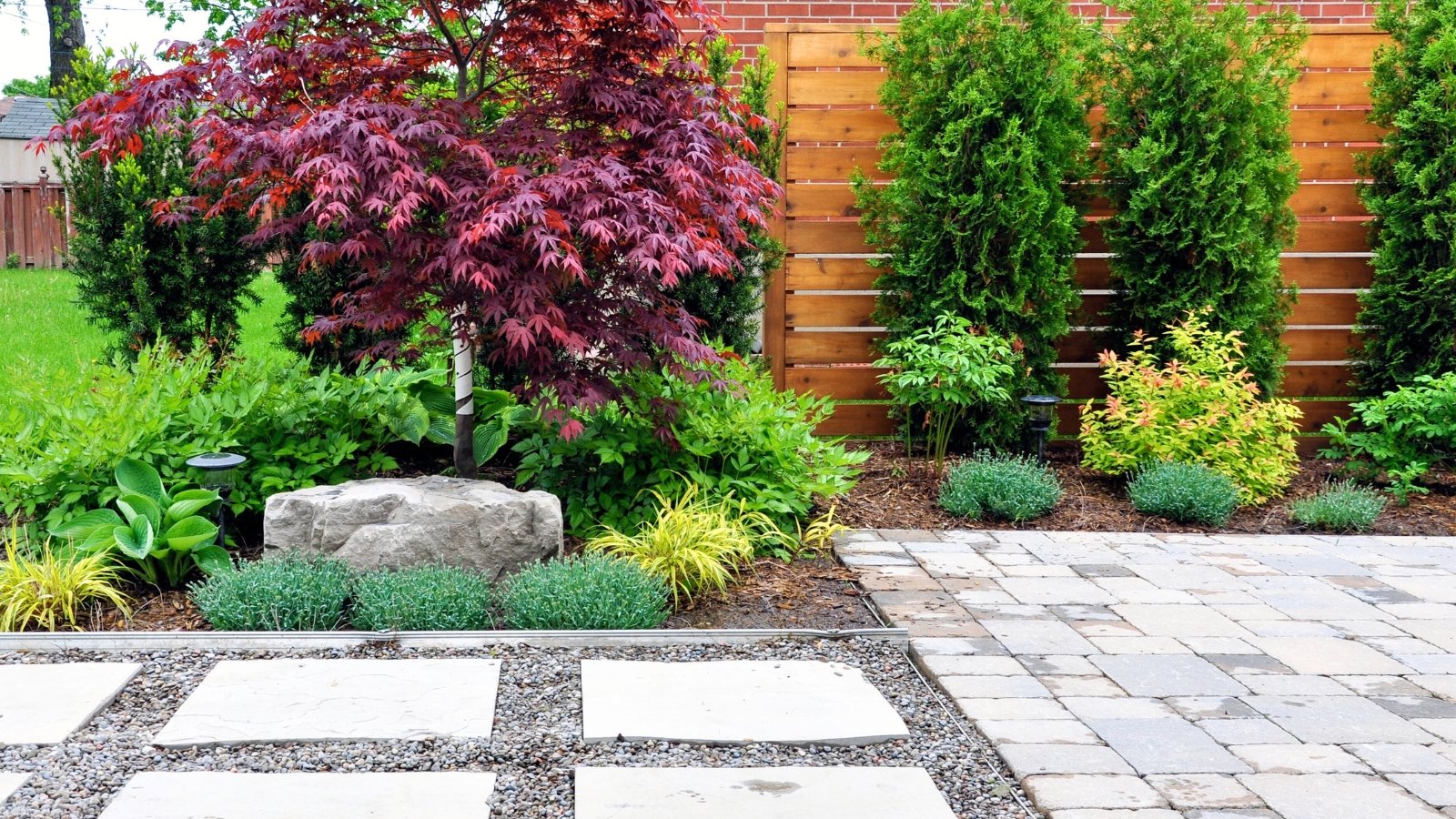 A mixed hedge softens unsightly corners gracefully.
A mixed hedge softens unsightly corners gracefully.Sometimes, a little tucking in or screening lets the functional parts blend while highlighting the home and landscape. From hoses to garbage cans to storage areas to utility boxes, a discreet natural buffer boosts curb appeal. A well-planted screen softens the items that detract from the overall visual appeal.
From a single evergreen specimen to a mixed hedge or perennial border, natural screens also enhance privacy. They define a space, offer structure, and sculpt the view. For the screen to blend seamlessly with the rest of the landscape, repeat selections from other garden areas (or at least their attributes, like similar colors or textures).
Infill Patchy Turf
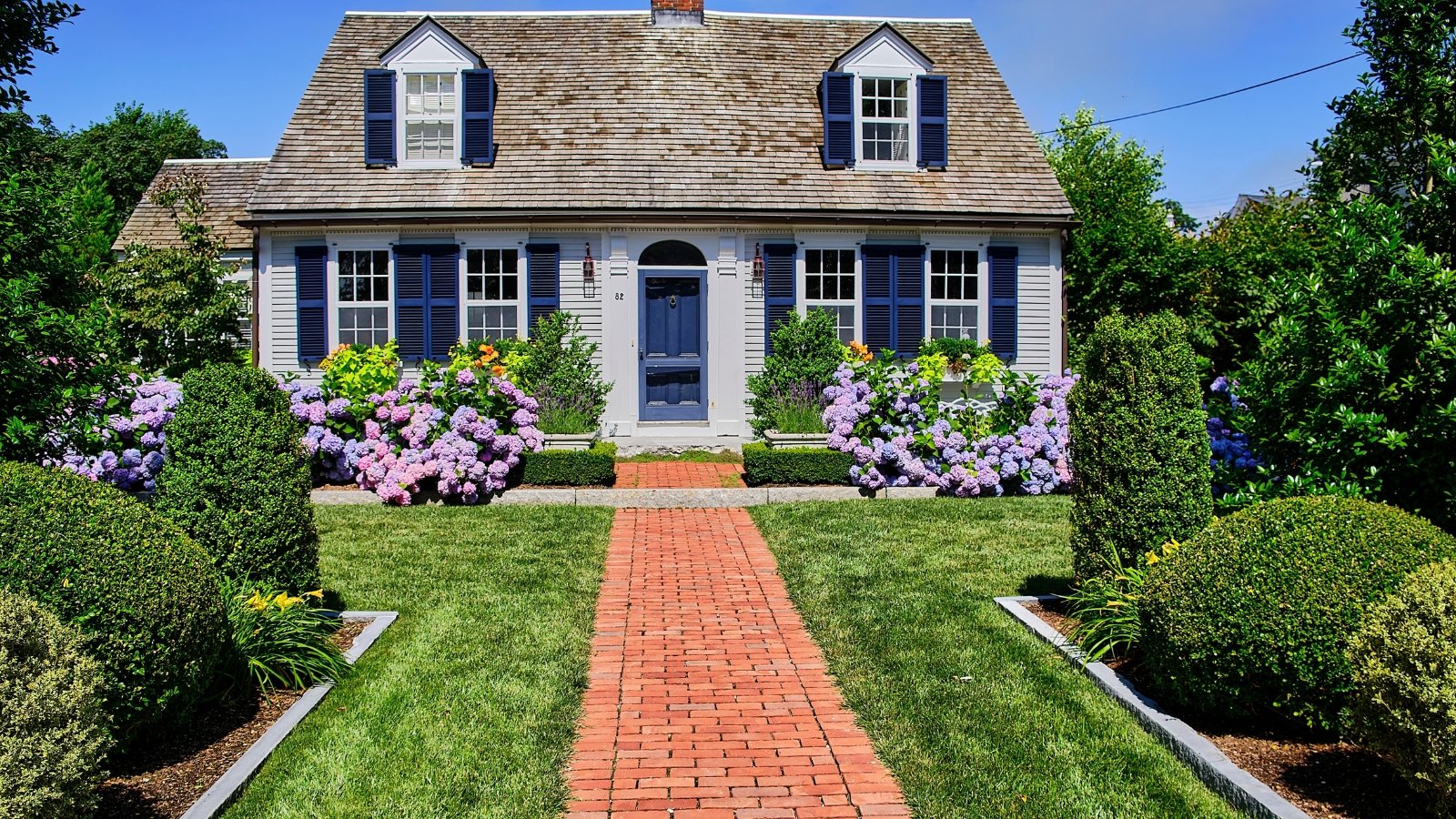 A light seed layer revives tired, sparse turf.
A light seed layer revives tired, sparse turf.By season’s end, grass can look worn from a summer of fun in the sun. If you have bare spots, infilling with grass seed in fall or spring brings a lift. The best time of year to sow grass seed is late summer and fall, followed by spring. Mild air and soil temperatures and regular seasonal moisture spur healthy growth.
Overseeding is an easy landscaping tweak for lawns with thinning patches that are otherwise healthy. Adding a seed layer to existing grass makes for more blades and a lush, pleasing look.
If you’re considering reducing expanses of turf, alternate groundcovers may be a fit. Enlarging the surrounding planting beds also enriches the site ornamentally and with ecosystem services like pollinator support, wildlife shelter, and stormwater management.
Prune Overgrown Shrubs
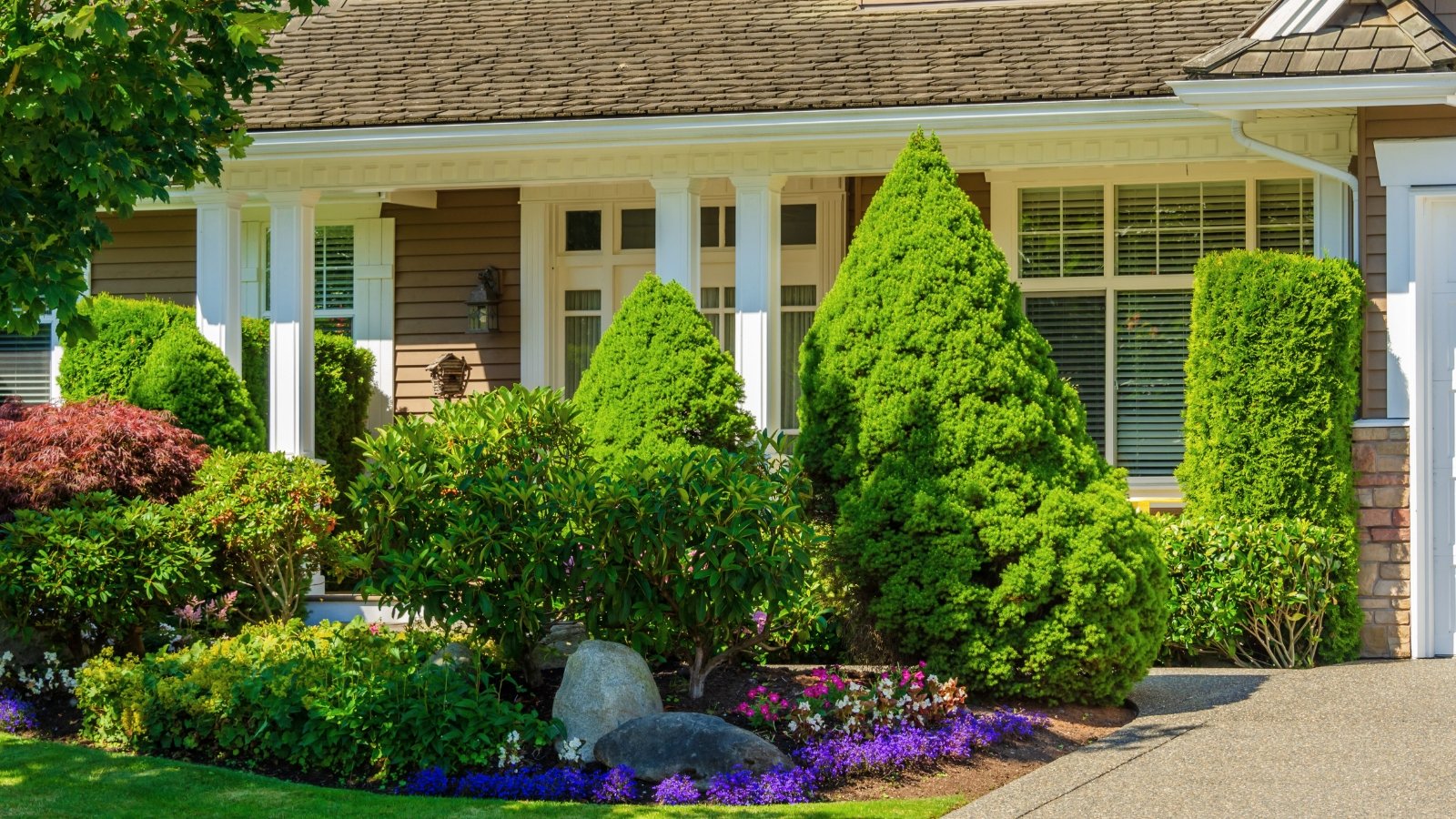 Rejuvenation pruning restores older shrubs to lively form.
Rejuvenation pruning restores older shrubs to lively form.Pruning any overgrowth, from vines to trees, is an easy landscape tweak for a significant transformation. While plants may look a little rough initially, they’ll flush out to an improved form.
Start with those nearest the house, like foundation plantings, to heighten attention to detail. If it’s been a few years since the last trim, they may benefit from either rejuvenation pruning or light cutback for shaping.
Whether going for a formal, tightly shaped aesthetic for certain shrubs or a more natural habit, pruning helps many in both cases. It can improve form, promote new growth and flowering, and manage size for those that benefit. It also increases air circulation to prevent disease issues and improve pest resistance.
Shrubs that may benefit from pruning include roses, lilacs, boxwood, hollies, yews, ninebark, and forsythia.
Prune out dead, diseased, or crossing branches any time of year. Shrubs handle a light trim for shaping in late summer (avoid pruning during high heat or drought conditions, though). Stop pruning by early fall to avoid encouraging new growth. Tender stems are susceptible to weakness and winter dieback. Reserve more major cutbacks for late winter.


 8 hours ago
7
8 hours ago
7



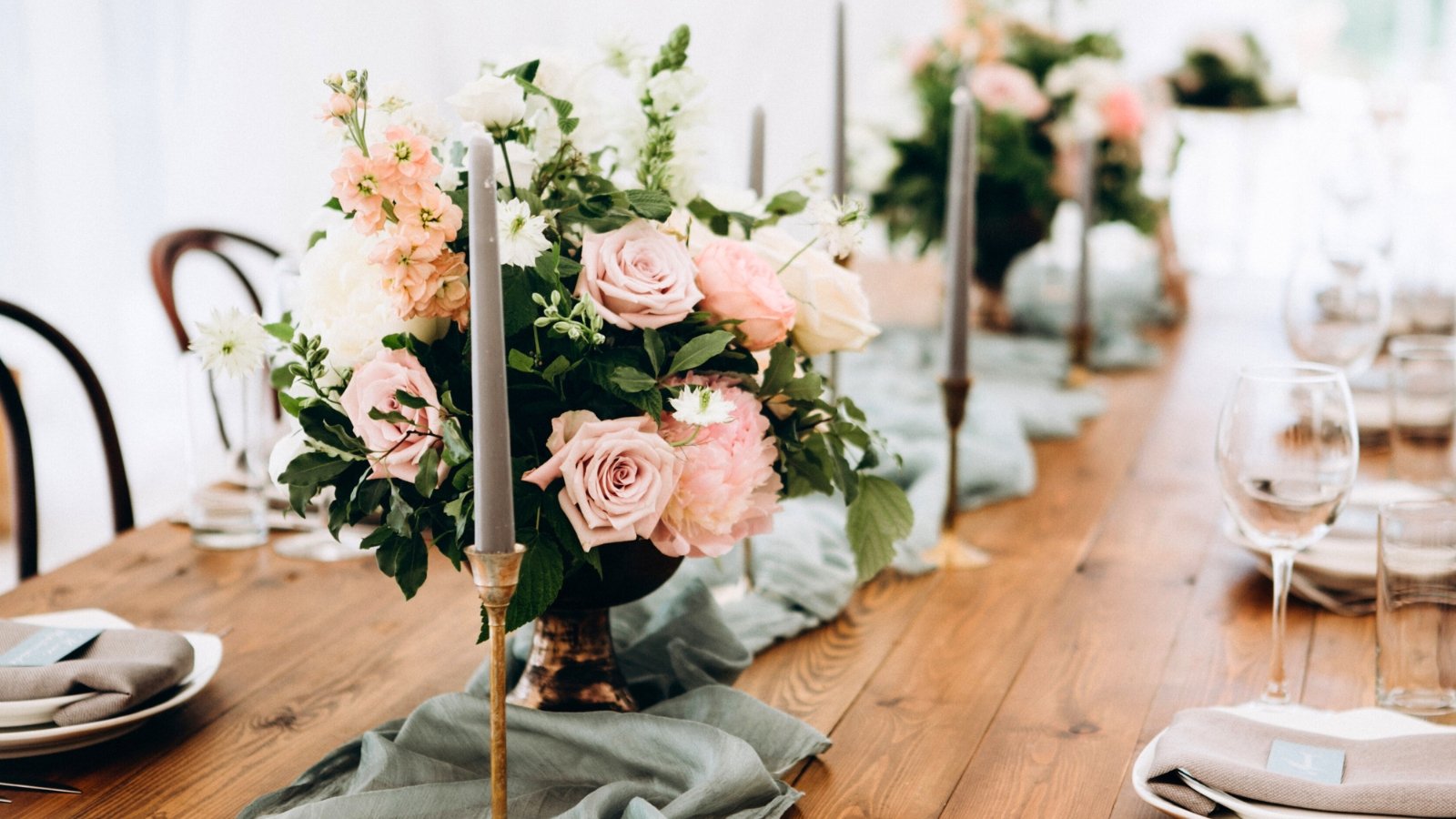
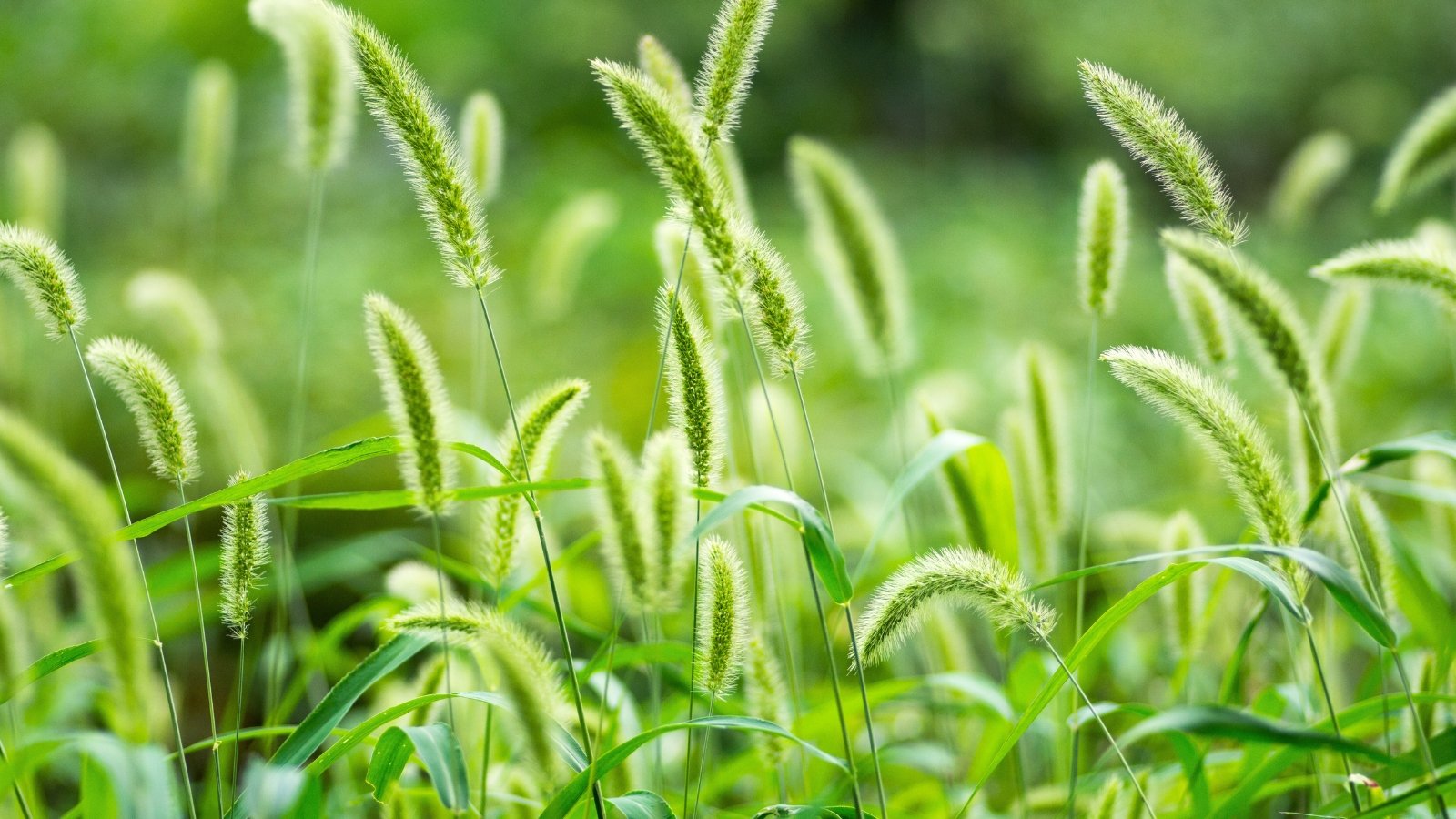
















 English (US) ·
English (US) ·  French (CA) ·
French (CA) ·